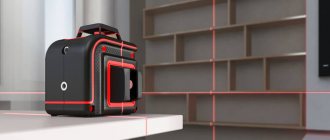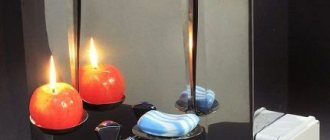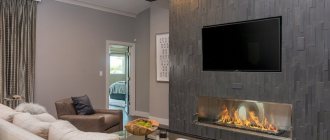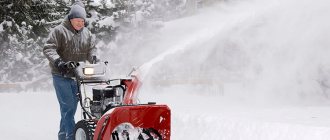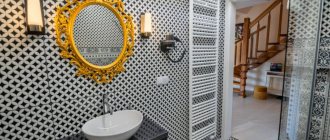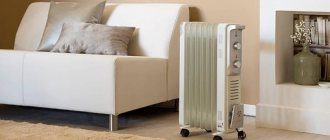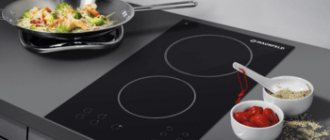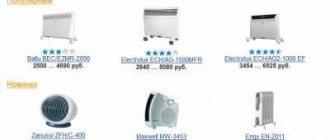Greetings! Repair requires not only financial and physical effort, but also a strong nervous system.
The main advantage of a self-leveling floor is the high speed of formation of an absolutely even, durable layer and the possibility of laying coatings not a month, but just a few days after pouring.
You will find many offers on the construction market, and it is very difficult to choose something truly worthwhile. In this case, many factors must be taken into account to ensure that the dry mixture fits your repair parameters. I will talk about products that are produced under the brands “Starateli”, Weber, “Volma”, “Bolars”, “Osnovit”, Bergauf, Ceresit.
Solution of the problem
Both problems are perfectly solved by a self-leveling composition, with which you can create a perfectly flat, durable, monolithic surface with no seams in the shortest possible time. Among the advantages, we should highlight the possibility of self-filling without professional help. Today on the market you can find a fast-hardening self-leveling floor “Starateli”, which can be thick or finish.
Application Features
The final fast-hardening self-leveling floor “Starateli” must be applied and evenly distributed over the surface. A needle roller must be used to remove air pockets. Since the material is made on the basis of cement, polymer additives and fillers, cement, anhydrite, and gypsum bases can be used as a rough base. However, their strength should not be less than 150 kg/m2.
The base should be cleaned of dirt and dust. Otherwise, the mixture may not adhere to the surface so firmly. Before starting work, all irregularities should be removed by filling them with special mixtures. You need to pour about 6 liters of water into the container, into which one bag of dry fraction is poured. Using a construction mixer, mix the composition for 4 minutes until you get an average mass without lumps. The mixture sits for 3 minutes and is mixed again. To avoid unexpected results, add the amount of water recommended by the manufacturer.
Calculation of the required amount of dry mixture for filling the floor
It is clear that in addition to choosing the optimal composition, the owner who has started the renovation will also be faced with the task of determining the required volume of dry mixture to purchase. Making your own calculations is not that difficult.
You will need to be armed with the following information:
- The area of the room in which the floor will be poured. As a rule, most rooms are rectangular in shape, that is, there are no problems at all. And other, more complex configurations, with the right approach, are not difficult to figure out.
One of the basic quantities when calculating construction or finishing work is the area of the room
It happens that the shape of the room differs from the usual rectangle. And quite often redevelopment of premises leads to this. It's okay: follow the link to the article on our portal dedicated to calculating areas - many different examples are considered there, and special calculators are posted.
- The existing height difference if the floor has a slope. It is determined when constructing the horizon of the future coating - by drawing an ideal horizontal baseline along the perimeter, followed by measuring heights at various points. This is even easier to do if you have a laser plane builder at your disposal.
How to inspect the floor for slopes and unevenness?
This operation cannot be avoided in any case, no matter what method of leveling the floor surface is chosen. Details about taking measurements and determining the “zero level” of the future floor are described in detail in the article “Do-it-yourself concrete screed” .
- The planned minimum pour thickness is for the highest point of the floor base. The minimum thickness should not be less than that recommended by the manufacturer.
- Finally, the last value will be the approximate consumption of the mixture per unit of floor area, which is indicated in the passport characteristics of the compositions.
To simplify the task for our reader, below is an online calculator that will allow you to carry out calculations quickly and with a sufficient degree of accuracy. “Passport” costs of bulk trains “Starateli” have already been included in the program database.
The answer will be given in kilograms and immediately converted into the number of factory packages (bags). It is recommended to purchase dry mixtures with a reserve - this 5% reserve is already taken into account in the calculations. Naturally, a whole number of packages are purchased - the fractional number of bags is shown for reference purposes only. That is, if, for example, 12.3 bags are shown, then you need to buy 13 pieces.
You can also get acquainted with the Unis self-leveling floor and the Volma self-leveling floor in special articles on our portal.
Calculator for calculating the amount of dry mixture “Starateli” for filling the floor
Go to calculations
Popular brands of self-leveling floors Prospectors
The mixtures are produced at factories located in several regions of our country - in the Moscow, Belgorod and Ulyanovsk regions, the Republic of Buryatia, Krasnodar and Khabarovsk Territories. This allows you to shorten the path from production workshops to store shelves, and therefore reduce the price. In the official online store of the brand, the price for self-leveling floor “Starateli” in 25 kg packaging varies, depending on the type of mixture, from 268 to 340 rubles. Options available for purchase include:
High-strength self-leveling floor "Starateli"
Withstands compression loads up to 25 MPa. The base is cement. Consumption, with a layer thickness of 10 mm, is 16 - 18 kg per square meter. Frost resistance class – F-75. In order to improve the strength characteristics, the creators decided to increase the time for complete hardening of the solution. You can only step on the surface after 24 hours.
It is used for basic and final leveling of concrete and cement-sand bases for subsequent laying of floor coverings. Suitable for installing screeds on the separating layer. Ideal for increased operating loads (in high traffic areas, garages, basements, warehouses and industrial premises).
Average price: 284 rubles/piece for 25 kg.
Characteristics:
| Color | grey |
| Astringent | cement |
| Recommended layer thickness | 30 - 100 mm |
| Mixture consumption for a layer of 10 mm | 16 -18 kg/m² |
| Mixing proportions | 0.2 - 0.24 l/kg (5-6 l/25 kg) |
| Strength of adhesion to concrete base, not less | 0.6 MPa |
| Compressive strength after 28 days, not less | 25 MPa |
| Bending tensile strength class, not lower | Btb4 (5 MPa) |
| Viability of the finished solution, not less | 40 minutes |
| Possibility of walking on the surface | 24 hours |
| Mobility brand | Rk5 |
| Laying floor coverings: | |
| - tiles, porcelain stoneware, stone | in 3-7 days |
| - laminate, parquet, linoleum, carpet | in 21-28* days |
| Frost resistance grade, not lower | F75 |
| Work temperature | from +5 to +30 °С |
| Shelf life | 12 months |
Self-leveling floor "Starateli" thin
Consists of cement, gypsum, sand and modifying additives. It is consumed economically, about 14 - 15 kg per 1 sq. meter (layer 10 mm). The maximum permissible compressive load is 15 MPa (28 days after installation). Recommended layer thickness is 1 – 30 mm. Stepping on the filling is allowed after 6 hours.
It is used for final leveling of bases (concrete, cement-sand, gypsum, anhydrite) for subsequent laying of floor coverings. Used in rooms with normal and high humidity.
Average price: 369 rubles/piece for 25 kg.
Characteristics:
| Color | light gray |
| Astringent | Complex mineral binder based on gypsum and cement |
| Recommended layer thickness | 1 - 30 mm |
| Mixture consumption for a layer of 10 mm | 14 – 15 kg/m² |
| Mixing proportion | 0.30 - 0.34 l/kg (7.5-8.5 l/25 kg) |
| Strength of adhesion to concrete base, not less | 0.8 MPa |
| Compressive strength after 28 days, not less | 15 MPa |
| Bending tensile strength class | Btb2.4 (3 MPa) |
| Viability of the finished solution, not less | 40 minutes |
| Possibility of walking on the surface | 4 - 6 hours |
| Mobility brand | Rk5 |
| Laying floor coverings: | |
| - tiles, porcelain stoneware, stone | in 3-7 days |
| - laminate, parquet, linoleum, carpet | in 7* days |
| Temperature of air, base, materials during operation | from +5 to +30 °С |
| Shelf life | 6 months |
Thick self-leveling self-leveling self-leveling floor "Starateli"
Why it got this name is unclear. Recommended layer thickness (maximum) is 100 mm. The base is cement. Permissible load – 20 MPa. As in the case of the “High-Strength Prospectors” brand, the consumption is 16 – 18 kg per square meter. meter (with a layer thickness of 10 mm), and walking on the surface is allowed no earlier than every other day.
It is used for basic and final leveling of concrete and cement-sand bases for subsequent laying of floor coverings. Suitable for installing screeds on the separating layer. Ideal for significant differences in floor level. Used in rooms with normal and high humidity (including unheated ones), as well as for outdoor work.
Average price: 268 rubles/piece for 25 kg.
Characteristics:
| Color | grey |
| Astringent | cement |
| Recommended layer thickness | 30 -100 mm |
| Mixture consumption for a layer of 10 mm | 16 – 18 kg/m² |
| Mixing proportions | 0.20 - 0.24 l/kg (5-6 l/25 kg) |
| Strength of adhesion to concrete base, not less | 0.6 MPa |
| Compressive strength after 28 days, not less | 20 MPa |
| Bending tensile strength class, not lower | Btb4 (5 MPa) |
| Viability of the finished solution, not less | 40 minutes |
| Possibility of walking on the surface | 24 hours |
| Mobility brand | Rk5 |
| Laying floor coverings: | |
| - tiles, porcelain stoneware, stone | in 3-7 days |
| - laminate, parquet, linoleum, carpet | in 21-28* days |
| Frost resistance grade, not lower | F75 |
| Temperature of air, base, materials during operation | from +5 to +30 °С |
| Shelf life | 12 months |
Practical self-leveling floor "Starateli"
The composition contains sand, cement, gypsum and complex additives. Practicality lies in reducing material consumption to 14 - 15 kg per square meter. meter (layer 10 mm) and reducing the hardening time to 6 hours, after which you can already walk on the pouring. However, nothing is given for nothing. Compressive strength is reduced to 12 MPa. The layer thickness should not exceed 70 mm.
The most affordable among the fast-hardening self-leveling floors of the Starateli brand. It is used for basic and final leveling of bases (concrete, cement-sand, gypsum, anhydrite) for subsequent laying of floor coverings. Suitable for installing screeds on the separating layer. Used in rooms with normal humidity.
Average price: 250 rubles/piece for 20 kg.
Characteristics:
| Color | light gray |
| Astringent | complex mineral binder based on gypsum and cement |
| Recommended layer thickness | 5 - 70 mm |
| Mixture consumption for a layer of 10 mm | 14 – 15 kg/m² |
| Mixing proportions | 0.27 - 0.3 l/kg (5.4-6.0 l/20 kg) |
| Strength of adhesion to concrete base, not less | 0.6 MPa |
| Compressive strength after 28 days, not less | 12 MPa |
| Bending tensile strength class | Btb2.4 (3 MPa) |
| Viability of the finished solution, not less | 40 hours |
| Possibility of walking on the surface | 5 - 6 hours |
| Mobility brand | Rk5 |
| Laying floor coverings: | |
| - tiles, porcelain stoneware, stone | in 3-7 days |
| - laminate, parquet, linoleum, carpet | in 7* days |
| Temperature of air, base, materials during operation | From +5 to +30 °С |
| Shelf life | 6 months |
Self-leveling floor "Starateli" quick-hardening
Reducing the initial hardening time to 4 hours and consumption to 13.5 - 14.5 kg per square meter. meter was achieved due to the deterioration of a number of other parameters. Strength characteristics do not exceed 15 MPa. Adhesion to the base is reduced to 0.8 MPa. The traditional components of the formulation are cement and gypsum.
It is used for basic and final leveling of bases (concrete, cement-sand, gypsum, anhydrite) for subsequent laying of floor coverings. Suitable for installing screeds on the separating layer. Ideal under tight deadlines. Used in rooms with normal humidity.
Average price: 280 rubles/piece for 20 kg.
Characteristics:
| Color | light gray |
| Astringent | complex mineral binder based on gypsum and cement |
| Recommended layer thickness | 5 - 100 mm |
| Mixture consumption for a layer of 10 mm | 13.5 - 14.5 kg/m² |
| Mixing proportions | 0.30 - 0.34 l/kg (7.5-8.5 l/25 kg) |
| Strength of adhesion to concrete base, not less | 0.8 MPa |
| Compressive strength after 28 days, not less | 15 MPa |
| Bending tensile strength class, not lower | Btb2.4 (3 MPa) |
| Viability of the finished solution, not less | 40 minutes |
| Possibility of walking on the surface | 4 hours |
| Mobility brand | Rk5 |
| Laying floor coverings: | |
| - tiles, porcelain stoneware, stone | in 3-7 days |
| - laminate, parquet, linoleum, carpet | in 7* days |
| Temperature of air, base, materials during operation | from +5 to +30 °С |
| Shelf life | 6 months |
For buyers wondering which self-leveling floor is best to choose, we recommend that, first of all, they take into account the expected operating conditions. All other parameters are secondary. What good is economical consumption, quick drying and low cost if the material, under the influence of external factors, loses its properties. And the stingy, as is well known, pays twice.
Surface preparation
Quick-hardening self-leveling floor “Starateli” (25 kg bag) can be purchased by you to level surfaces. At the same time, to obtain a positive result, it is necessary to properly prepare the base. It should be cleaned of oil stains, dust and other substances that could reduce the adhesion strength to the surface. If necessary, you can apply a universal primer of the same brand. After this, leave the surface for one hour until completely dry.
If you have to work with highly absorbent substrates, then priming can be carried out in two layers. A damper tape should be fixed along the walls around the perimeter of the room and around columns, as well as other protruding elements. In order for the fast-hardening self-leveling floor “Starateli” to lay down in an even layer, it is necessary to install beacons. The correctness of their location is checked with a level or building level.
